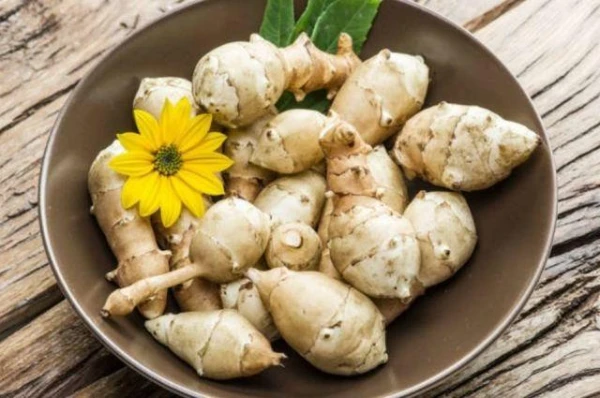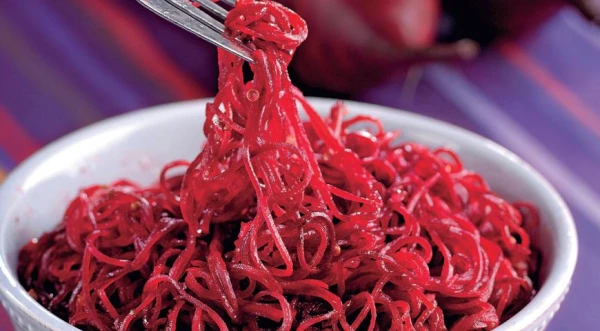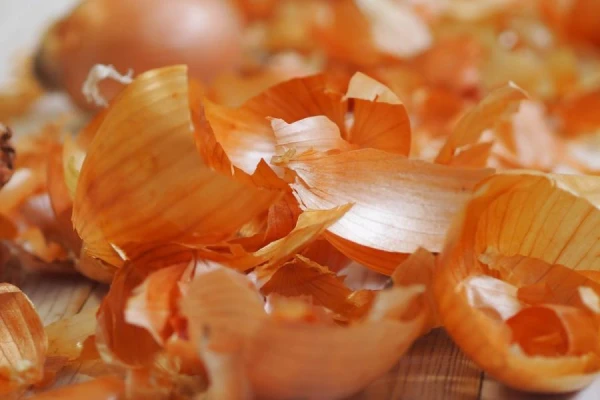
Jerusalem artichoke is found in many garden plots and is often perceived by gardeners as an impressive weed 2-2.5 meters tall, resembling a sunflower. By the end of the growing season, in late September, it forms a living hedge. This plant does not require special care and is not susceptible to diseases and pests, like an introducer. It winters well, but unfortunately, knowledge about Jerusalem artichoke usually ends there.
However, a century or two ago, before the advent of potatoes, the Jerusalem artichoke played a significant role in the diet of ordinary people. Europeans first learned about it in North America. One of its names, Jerusalem artichoke, comes from the name of the indigenous tribe 'tupinamba'. By the late 17th century, for settlers in North America, Jerusalem artichoke constituted up to 40% of their diet in the fall and winter.
Another name for Jerusalem artichoke used in English-speaking countries is 'Jerusalem artichoke'. This name appeared thanks to Italian settlers in the USA, who noticed its resemblance to the sunflower, which in their language was called 'girasol'. Hence, 'Jerusalem' (Jerusalem) came from it.
There is some truth in this name — in taste, Jerusalem artichoke does vaguely resemble artichoke and asparagus. However, unlike these two plants, the Jerusalem artichoke has a high yield: one bush can produce from 70 to 150 tubers, which amounts to 2-3 kg. The average yield from 1 ares reaches 400-600 kg, which is 2-3 times higher than the yield of potatoes.
The unusual yield of Jerusalem artichoke attracted the attention of the young Soviet government, and, as it was during the time of Peter I and Catherine I, it began to actively promote this crop. The famous scientist-breeder Nikolai Vavilov also contributed to this process, who in the early 1930s developed several new varieties of Jerusalem artichoke. However, soon the matter stalled — vast fields of Jerusalem artichoke could not continue to exist. It turned out that in Russian conditions, large stocks of Jerusalem artichoke do not keep well.
The storage problem is a sad feature of this crop. Unlike potatoes, the tuber of Jerusalem artichoke does not form a protective skin after being dug up, which leads to rapid drying and makes it vulnerable to microorganisms. A maximum of two weeks — this is the storage time for Jerusalem artichoke, even in the refrigerator.
However, the tubers keep well in the ground. In Western European countries (in England, France, and Germany, where this crop is most popular), a gardener can go out and dig up tubers in January-February. In Russia, however, at this time, the ground can only be broken with a crowbar.
This limitation significantly affected the spread of Jerusalem artichoke in Russia. The digging season lasts only two months (until mid-November), and even then in small 'portions'.
Jerusalem Artichoke: Health Benefits
The short season should not serve as an excuse for forgetting this crop in our country. Jerusalem artichoke has several extraordinarily beneficial properties that are rarely found in other crops of our region.
The first — instead of starch (as in potatoes), its tubers contain inulin (15-20%) — a polysaccharide. This substance is found in sufficient quantities only in salsify, chicory, and burdock root — also not very popular plants in our diet. It is inulin that makes the consumption of Jerusalem artichoke safe and beneficial for diabetics.
The second property — when cooking Jerusalem artichoke, a fructose syrup is produced. Moreover, in terms of the yield of this sugar, Jerusalem artichoke surpasses even sugar beets (100 g from 1 kg compared to 60-80 g).
The first property elevated Jerusalem artichoke to the rank of medicinal plants. The second — allowed artisans to produce various sweets (and jams) from its syrup for diabetics and simply for adherents of a healthy lifestyle.
Let’s add information for another group of 'cooks' — Jerusalem artichoke is excellent as a raw material for moonshine production.
Recipes with Jerusalem Artichoke
Jerusalem artichoke is not only a useful and medicinal plant but also simply delicious. And its preparation does not require much effort. For example, unlike potatoes, Jerusalem artichoke does not need to be peeled — as mentioned, it has a thin, delicate skin. It is enough to wash the tubers well with a brush.
From Jerusalem artichoke, you can easily prepare several simple dishes. The first is raw salads with various components. For example, grate about 200 g of Jerusalem artichoke on a coarse grater, add one sour apple (remember that Jerusalem artichoke is sweetish in taste) and 1-2 stalks of celery. Salt and dress with sour cream.
In salads with Jerusalem artichoke, you can use carrots, red cabbage, and leafy salads. It pairs well with chicken and cheese.
The second dish is Jerusalem artichoke puree soup. It is very simple to prepare. For one serving, take 200 g of Jerusalem artichoke tubers, 2 cups of chicken broth, and 2-3 shallots. Cook the vegetables in the broth for 15-20 minutes (from the moment of boiling). Then blend this mixture with a blender. Add herbs and spices to taste (nutmeg pairs especially well with Jerusalem artichoke).
And for the laziest — fried Jerusalem artichoke in vegetable oil. Cut it into rings and fry for 10-15 minutes. As a low-calorie side dish (50 kcal per 100 g), it goes well with any meat.















Leave a comment